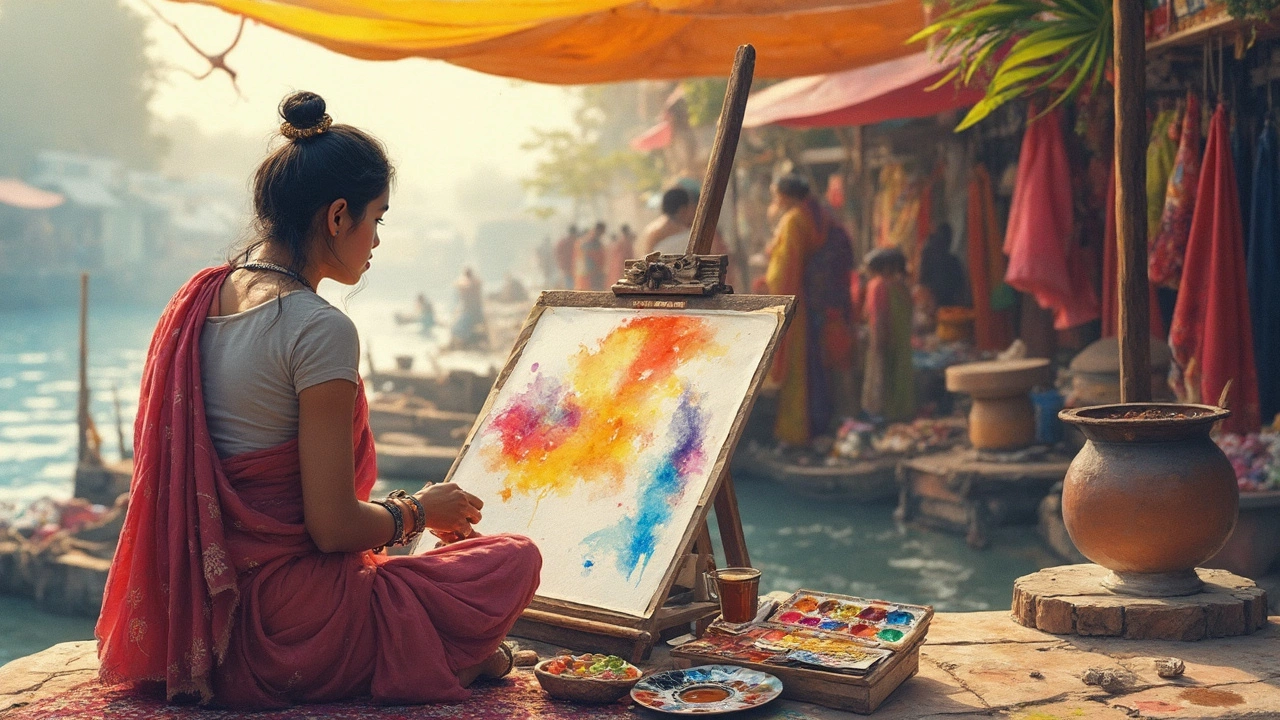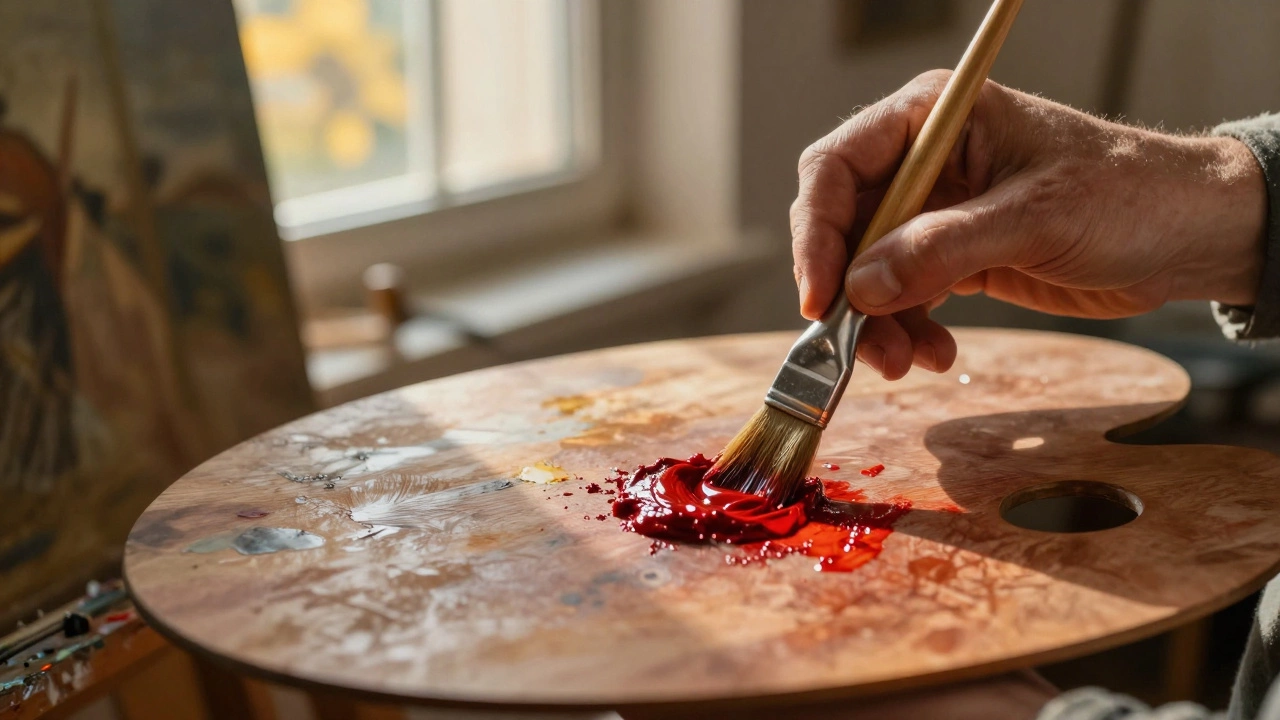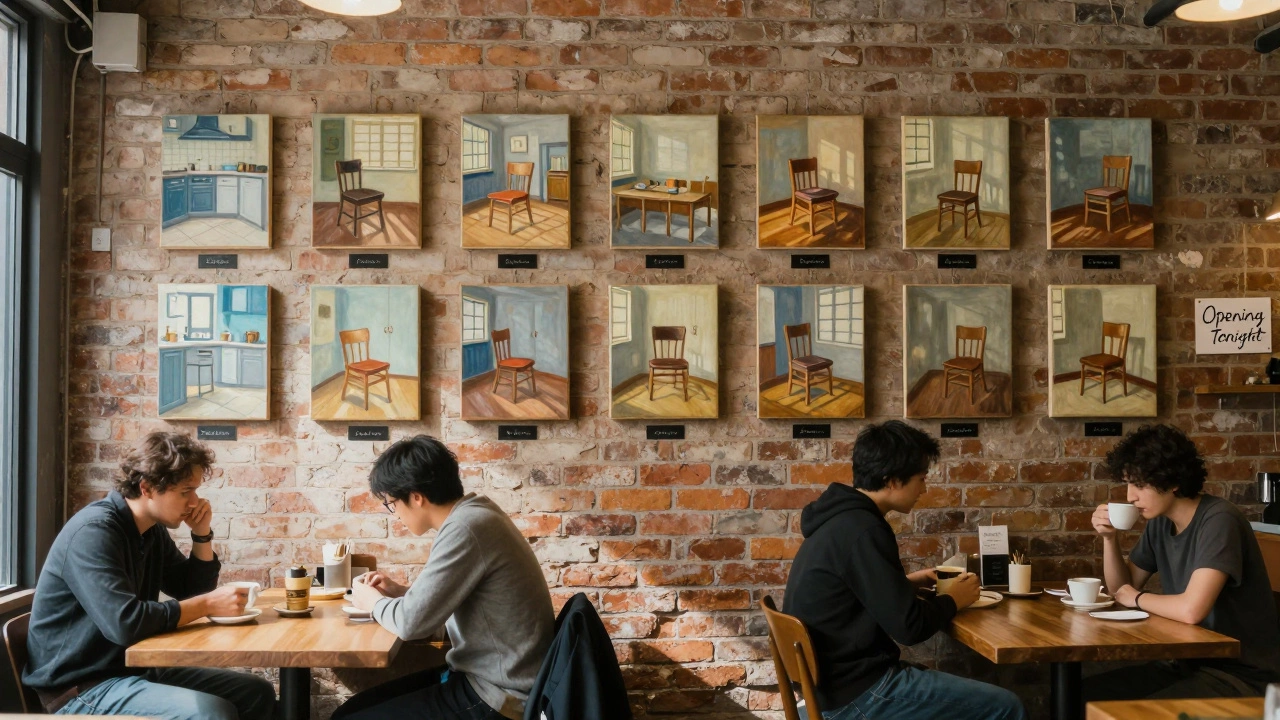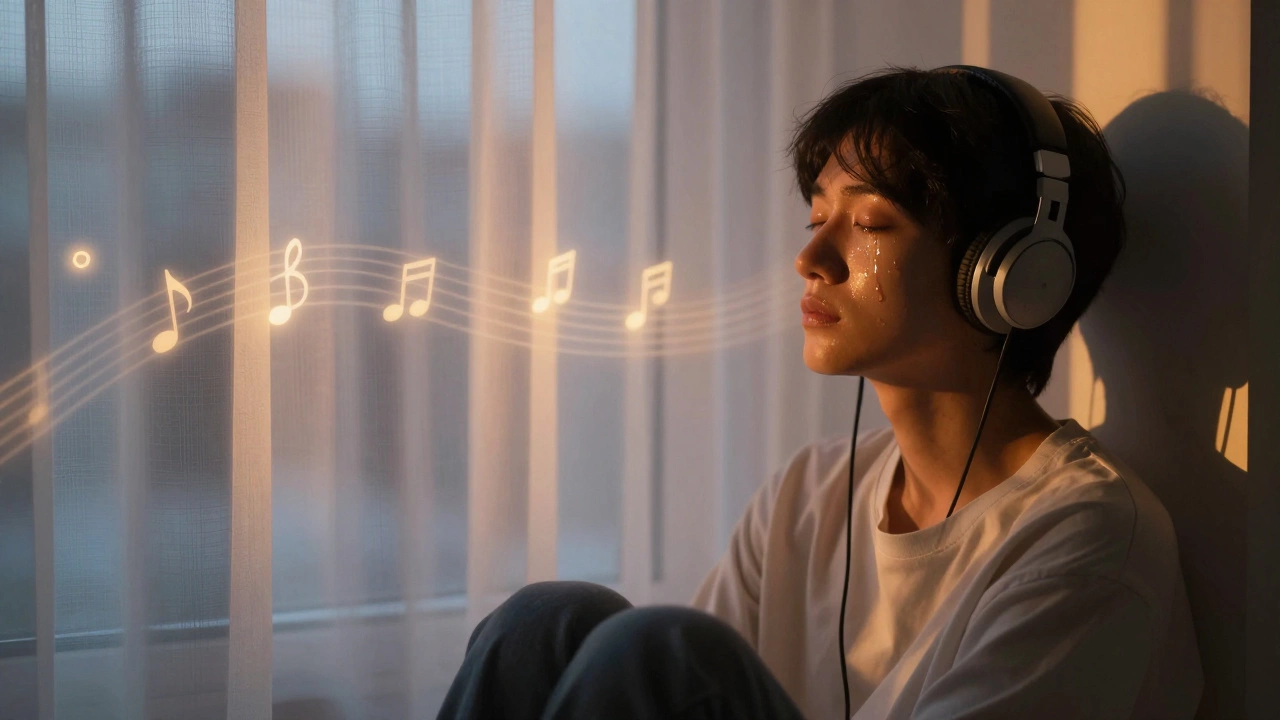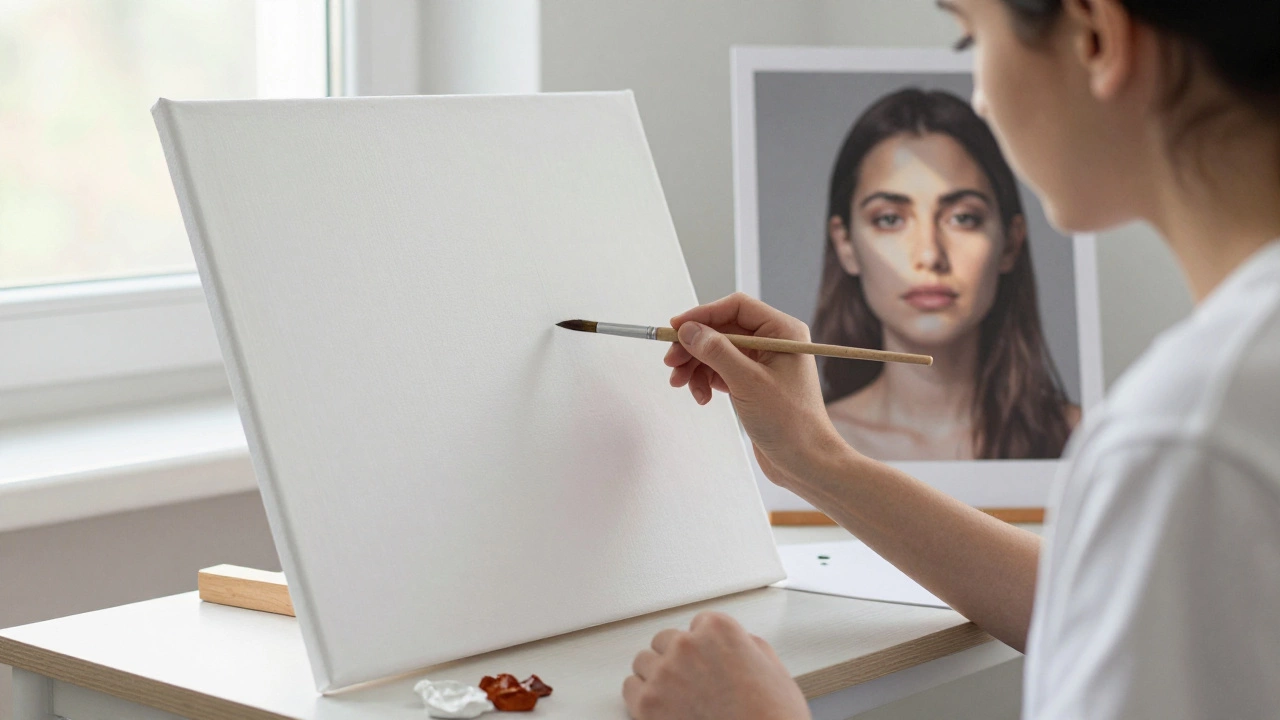Watercolor painting isn't always a walk in the park—it's more like a stroll through a garden after a heavy rain. Beautiful, sure, but slippery. Starting with one of the biggest hurdles, watercolors are notoriously fragile. Unlike acrylic or oil paints, a little too much water can transform your masterpiece into a soggy blur. It's like trying to build a sandcastle on the edge of the tide—you have to constantly adapt to the ever-changing conditions.
And while it sounds poetic, the unpredictability of watercolors can be a real headache. You might think you're in control, directing colors with precision, but one rogue drop of water and you're back to square one. Control, my friends, is more of an illusion when it comes to playing with watercolors.
- The Fragile Nature of Watercolors
- Limited Control and Unpredictability
- Material Sensitivity and Costs
- Challenges in Layering
- Mixing Colors: A Delicate Balance
The Fragile Nature of Watercolors
Watercolor painting might seem dreamy and serene, but it has a fragile side that can stump even the most seasoned artists. One of the biggest issues is how easily a painting can be ruined. Just a splash of too much water can blur the shapes and colors you've painstakingly applied. It's this delicate balance of water and paint that makes watercolor paintings both mesmerizing and maddening.
Did you know that watercolor paper has different weights and textures? The quality of your paper can make or break your work. Lightweight paper can warp under excess water, causing an uneven surface that messes with your planned design. Opting for heavy, high-quality paper can minimize this risk. If you're using cheaper paper, you're skating on thin ice.
Handling Mistakes
Mistakes in watercolor are tricky to fix. While in acrylics, you can paint over mishaps; in watercolors, you don't get that luxury. The paint stains the paper, and often, trying to scrub the colors away just makes things worse, creating unwanted textures. It’s better to think of mistakes as happy accidents or plan your work to be more forgiving.
Environmental Sensitivity
Watercolor is incredibly sensitive to the environment. Humidity levels can drastically change how the paint behaves. In dry conditions, colors dry too quickly, making blending difficult. On humid days, the paint may stay wet longer, risking accidental smudging while working.
The key is control—managing your supplies, your environment, and the paint-to-water ratio. It's like a juggling act where you get better with practice. Understanding these challenges gives you the upper hand in managing the volatile medium of watercolors.
Limited Control and Unpredictability
Painting with watercolor might feel like trying to predict the weather—try all you want, and yet, surprises are inevitable. For starters, watercolors have a mind of their own. Once on paper, these colors tend to spread unpredictably. It's a bit like herding cats, trying to keep control of every brushstroke.
You have limited time to work those watery blends before they dry. When the paint dries, any attempt to adjust or fix your work might actually worsen it. Artists often joke that watercolors are all about 'letting go' and embracing unexpected results. This quirk can be a fun creative challenge, but if you're a control freak, it might drive you bonkers.
Seeking Balance
Some artists thrive under this laissez-faire approach, leveraging it to create unique textures and effects. Embracing transparency and the natural flow can lead to incredible art. Layering, for instance, adds depth but requires mastering patience and timing. Since watercolors dry lighter compared to when wet, you've got to plan ahead.
Let's illustrate with a simple watercolor fact: unlike opaque mediums, the layer underneath remains visible. This makes it necessary to strategize every brushstroke, predicting how the colors will interact once layered.
Strategies to Gain Better Control
- Use quality paper that absorbs water evenly—this can prevent the paint from pooling.
- Experiment with different brushes to find the one that suits your technique.
- Test mixing colors on a separate sheet before applying them to your artwork.
- Practice controlled breathing to steady your hand and brush movement.
Working with watercolor might involve more surrender than control, but with time and practice, even unpredictability can become part of the artistic process.
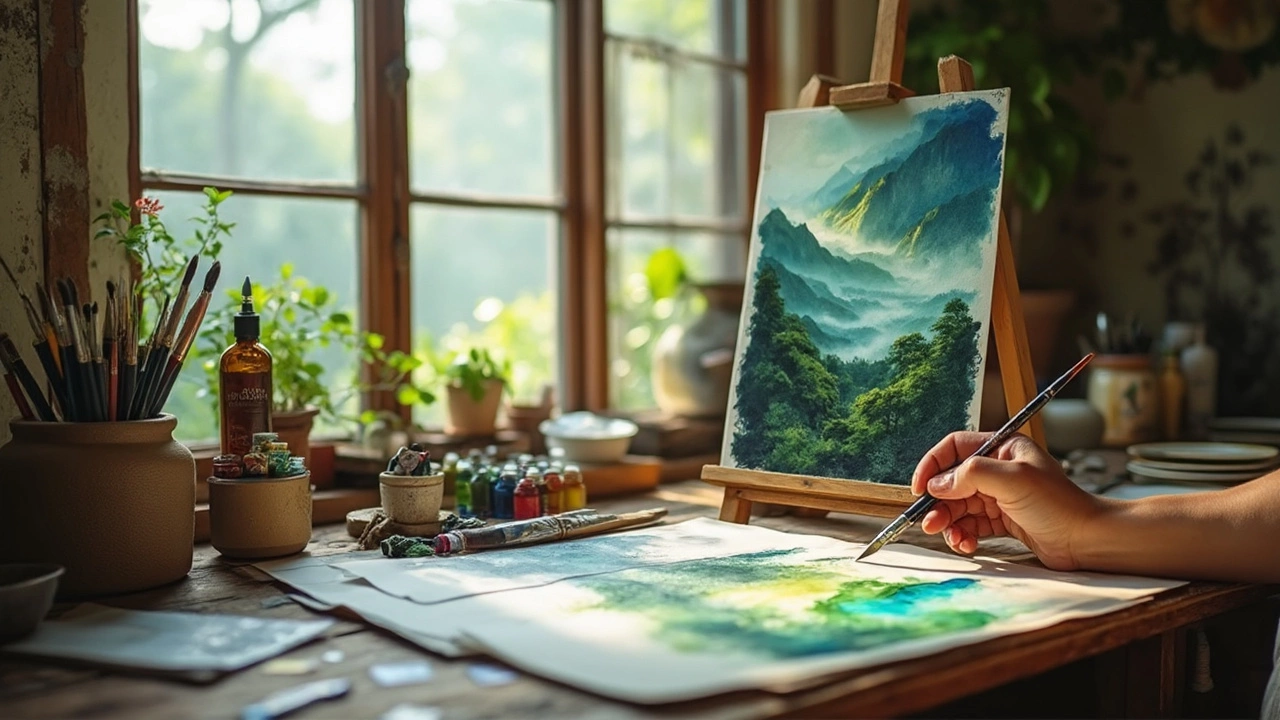
Material Sensitivity and Costs
When it comes to watercolor painting, you're looking at a bit of a delicate dance with your materials. Watercolors rely heavily on the quality of the paper, which means skimping out might leave you with subpar results. You can't just grab any notebook off the shelf and expect your masterpiece to hold up.
Let’s break it down a bit. Watercolor artworks often require nice, thick paper, usually 140 lb (300gsm) or heavier. This weight ensures your paper doesn’t warp or buckle when it gets wet. But, as you might have guessed, quality paper comes with a price tag. If you're serious about your art, investing in professional-grade paints and paper isn’t an option—it’s a must.
Then there are the paints themselves. Good quality watercolor paints don't come cheap. Higher-end paints contain more pigment and less filler, giving you that rich, vibrant color payoff that artists love. But again, this bumps up the costs.
Understanding the Costs of Quality
You might find yourself asking, "Is it really worth spending extra on these materials?" Let’s lay it out:
- Higher pigment concentration: Better paints use more pigment and less binder, meaning the colors interact beautifully on paper.
- Durable paper: High-quality paper resists yellowing over time, keeping your work looking fresh.
- Longevity: Investing in good materials often means your art will stand the test of time.
Sure, the initial costs might sting, but over the long run, using the right materials can save you from frustration and wasted efforts. Think of it as setting the stage for your creativity to shine without the stress of fighting low-quality supplies.
Challenges in Layering
Layering in watercolor paintings sounds simple—you add light layers one after another to get depth and mood—but it’s often easier said than done. This is not about just stacking colors like pancakes.
Here's the kicker: watercolors are transparent. So when you add layers, every underlying layer still peeks through. This can give a unique and beautiful effect but makes achieving the exact color you want a bit tricky. You end up playing a delicate balancing act between applying sufficient pigment and maintaining the previous layer’s integrity. How often do you feel like you’re walking on eggshells when all you want to do is paint?
Timing Matters
With watercolors, timing is everything. Each layer needs to dry before adding another. If you're impatient like me, it just gets smudgy and muddy. Think about it this way—you're painting the Mona Lisa on sandwich paper, and you've just spilled your coffee. Wait for each layer to dry.
This astounds beginners who aren't used to this type of patience. Try using a hairdryer on a cool setting to speed things up if you're in a pinch, but be cautious of blowing the paint around.
Material Matters
The quality of your materials really comes into play here. Lower quality paper often warps or buckles when too many layers are applied, affecting your control and the final look of the painting. So, investing in higher-quality, thicker paper, like 300gsm, can save you a headache later.
And don’t skimp on your actual paints. Quality paints retain their color even through multiple layers, unlike cheaper options which can look weaker and frustratingly chalky over time.
Tips for Successful Layering
- Practice with painting tips: Start with lighter colors and gradually work towards darker shades.
- Maintain a consistent order: This contributes to a more harmonious look.
- Use a test sheet: Before adding layers to your main piece, try them out on a scrap of the same paper to gauge transparency and color interplay.
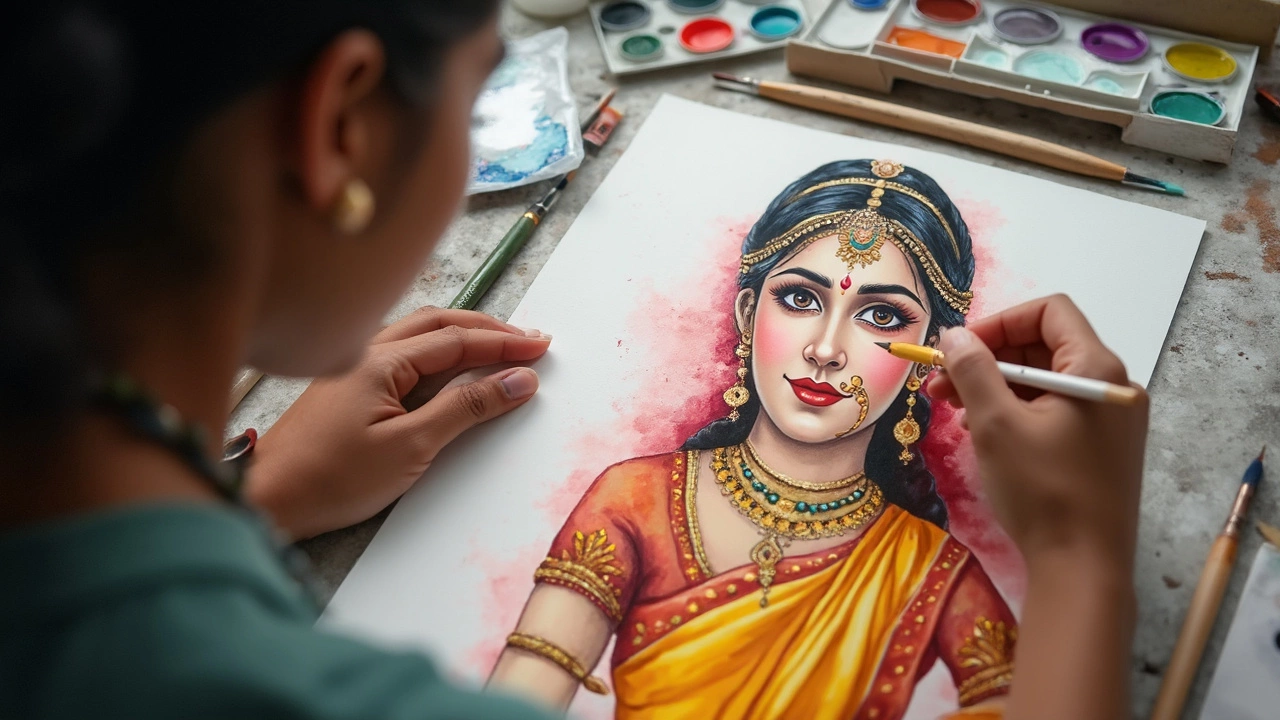
Mixing Colors: A Delicate Balance
When it comes to watercolor paintings, color mixing is no simple task. It’s a bit like trying to mix a custom shade of paint using only a handful of ingredients; you need to be precise, or you might end up with something entirely different than what you intended. The transparency of watercolors adds to the complexity because the underlying paper and previous layers will influence the final hue.
Here’s a nugget of wisdom from Carol Carter, a well-known watercolor artist:
"Watercolor demands a light-hearted approach to mixing. Remember, it’s a dance between you and the medium where both partners must listen."
Now, let's break down the basics. To get a good start, the color wheel is your best friend. It helps you understand primary, secondary, and complementary colors. But even with that knowledge, trial and error is your main teacher. Mixes can sometimes dry lighter or darker than they appear when wet, and that can surprise many newcomers.
Essential Tips for Better Mixing
- Always test mixed colors on a scrap piece before applying them to your artwork. Shift happens, and unexpected results are not what you want on your masterpiece.
- Beware of muddiness. It's like mixing too many flavors in a cooking pot; the result can quickly turn into an unappetizing gray.
- Layer carefully. More pigment doesn’t mean more beauty. Controlled, less-saturated layers often yield the most vibrant results.
Here's a fun fact: In a typical watercolor set, you might find five blues and a collection of reds and yellows. These aren't just for show. Each pigment has unique properties that affect how they blend. Different reds have different levels of transparency and granulation. Understanding these details can dramatically enhance your color mixes.
Blending Techniques
Consider techniques such as wet-on-wet and wet-on-dry. Wet-on-wet lets colors diffuse into each other, creating smooth transitions that can highlight your watercolor’s bright nature. However, this requires a deft touch — too much water and your colors risk a chaotic swirl instead of a gentle melding.
The challenge of color mixing in watercolors might seem a bit overwhelming, but don’t let that deter you. Remember, it’s all part of the creative journey that makes watercolor such a rewarding medium.
